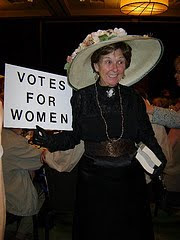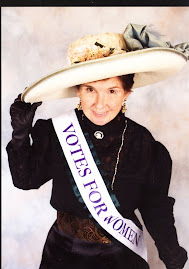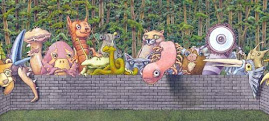by Joan Baril
In my dear old Hippie days I used to read comics: R. Crumb’s Mr. Natural, Gilbert Sheldon’s Furry Freak Brothers and Rand Holmes’ Harold Hedd sagas which I found in the Georgia Straight, Vancouver’s alternative newspaper.
Rand Holmes, creator of the Harold Hedd Comix
In the 80’s, a Japanese friend introduced me to a recently translated
historical,
Keiji Nakazawa's Barefoot Gen, an autobiographical story of the atomic bombing of Hiroshima. I marveled at the power of combination: well researched history, well drawn comix and good writing.
Next came Chester Brown’s Louis Riel, which some consider the best graphic novel ever.
Brown’s clean straightforward drawings match his impeccable history and his excellent writing.
It took
Brown five years to research the material which outlines the life and death of one of the most tragic figures in history.
I enjoy
Guy DeLisle’s travel books.
DeLisle, another Canadian, created insightful, funny, politically astute looks at China in
Shenzhen Journey, Korea in
Pyongyang, a Journey in North Korea and my favourite,
The Burma Chronicles which details the time spent with his family in that country.
Then came an artistic masterpiece,
Skim, by
cousins Mariko and Jillian Tamaki. Skim is the nickname of a goth girl in an all-girls school in Toronto in the early '90s. Skim is a compelling picture of an articulate, angsty teenager, the classic outsider yearning for acceptance. The art work is stunning.
A little girl, Marja, grows up in Iran during the revolution in Marjane Satrapi’s riveting memoir Persepolis. The sequel, Persepolis 2, follows the heroine Marja to Europe and back home to the claustrophobic realities of Ayatollah Iran. I found the movie, also titled Persepolis, as absorbing as the book.
Maus: A Survivor's Tale, Books I and II, by Art Spiegelman is a biography of the author's father, a Polish Jew and Holocaust survivor. It alternates between descriptions of Vladek's life in Poland before and during the World War II and his later life in New York. Jews are depicted as mice, Germans as cats, the Americans as dogs, etc., a conceit that works well and lightens the horrors of the story. The only comic book to have won a Pulizer Prize.
Emma Goldman’s wild ride of a life is vividly conveyed in Dangerous Woman: the Graphic Biography of Emma Goldman by American Sharon Rudahl. Brilliant graphics and a fast moving story line trace the life of the famous anarchist and crusader for women’s rights from her birth in pre-revolutionary Russia in 1869 to her death in Toronto in 1939.
So full circle back to Canada to Chester Brown and his latest book, Paying for It: A Comic Strip Memoir about Being a John. A historical? No but a history just the same, the history of Brown’s sex life. And perhaps a book which will make history. Brown dislikes romantic love and relationships so he turned to prostitutes. His graphics are graphic as he relates with commendable honesty his mixed feelings about his activities interspersed with a Greek chorus of disparaging comments by his friends. Eventually Brown visits the same girl for six years and considers her his girlfriend. Women readers will find Brown emotionally eviscerated. We never learn what kind of joint life the girlfriend leads with Brown or, since this is a sexual memoir, if she ever gets her chance at an orgasm. Brown ends with a well-reasoned plea for the decriminalization of prostitution.
graphic artist Chester Brown
\
But maybe women will get the last word. Last year, Ontario Judge Susan Himel found that laws set up to protect prostitutes actually endanger their safety, forcing them to furtively engage in hasty transactions conducted in shady locations. It’s all up in the air and the question hangs on the cases of prostitutes Valerie Scott and Amy Lebovitch and (fittingly) flamboyant dominatrix Terri-Jean Bedford. The male establishment is not amused.
Terri-Jean















































































































































































































































































No comments:
Post a Comment